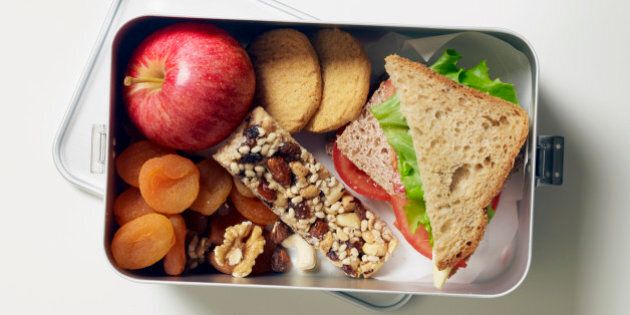
The return to the school year always gets me thinking about...sandwiches. Yes, there are lots and lots of wonderful alternatives for lunch. But somehow, for me and my children, it always comes back to the sandwich. Call it comfort, tradition, an old stand-by. I love the idea of sending my kids to school with a colourful home-made, bento-box style lunch, and someday I will definitely do that -- just not today. True, sandwiches can be vessels of hidden sodium and fat. Yet with the right ingredients, they can also be packed with flavour and nutrition!
Begin with the bread
In recent years, artisanal breads have gained popularity, and there are so many interesting breads in the marketplace. But be sure to choose breads made with whole grains. For variety, you can also get whole grain versions of other types of breads like pita, naan, bagels or tortillas. Whole grain, as the name implies, contains all of the grain -- the fibre-rich bran, the vitamin and mineral packed germ, and the starchy endosperm. Eating whole grains is associated with lower risk of heart disease, diabetes and certain cancers. When grains are processed or refined the bran and germ are removed, taking most of the fibre, B vitamins, vitamin E, trace minerals and antioxidants with them. White bread is made from refined flour.
How do you know if it's whole grain? Read the ingredient label, and if it doesn't say whole grain, then it isn't! Just because bread is brown doesn't mean that it's whole grain -- it could have an ingredient like molasses or caramel giving it its brown colour. And don't assume 'whole wheat' means whole grain. In Canada, bread can be called whole wheat as long as it has 95 per cent of the grain intact. But the 5 per cent that's removed can include much of the germ and some of the bran -- so most of the healthy nutrients are lost, too. And don't be fooled by fancy sounding names like "cracked wheat," "stone ground" or "multigrain" -- these are not necessarily whole grain, either. Again, read the label!
What's between the breads?
Including a source of protein in your sandwich is a good idea, because protein is filling, and will give you a lasting source of energy. Deli meats are a go-to for sandwiches, but they are high in sodium, and usually contain nitrites, a preservative, which are thought to increase cancer risk. When you roast chicken or beef for supper, make extra and save it for sandwiches for lunch. And if you do choose deli meats, compare labels and choose one with less sodium. Cheese is a good source of protein as well as calcium and vitamin D. Remember that fresh cheese is lower in sodium than processed, and look for lower fat cheese, ideally less than 20 per cent MF (milk fat). Another way to cut down on fat is by mixing fillings like egg, salmon or tuna with low fat yogourt or lower fat mayonnaise, rather than the full fat version.
For a change from the traditional sandwich, there are lots of great meat alternatives: hummus (made from chickpeas), bean spreads and nut butters are tasty and nutritious. You can also use avocado spread in place of butter or margarine. Whole grain pitas are a great option because you can fill them with lots of fun ingredients like edamame, seeds and beans, along with veggies and greens.
Top it up!
To really amp up the nutrition in your sandwich, fill it with fresh, colourful veggies for a great, low-cal way to add fibre, vitamins and minerals. Go beyond traditional leaf lettuce, with nutrition-packed greens like arugula, baby spinach or kale, adding variety in flavour and texture. Sliced peppers, shredded beets or carrots, or grilled veggies like zucchini or eggplant are also great additions. Finally, add flavour without adding fat or sodium using fresh herbs like basil or coriander. Be creative. Everyone loves a new twist on an old favourite. And if it's also nutritious -- it's the best of both worlds!
ALSO ON HUFFPOST: